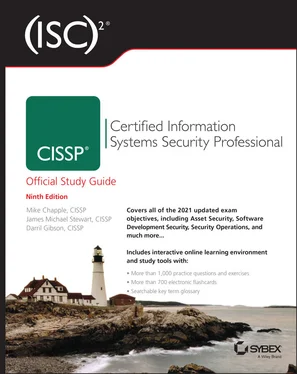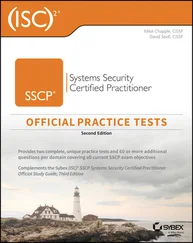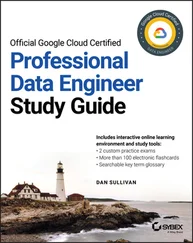Any safeguard that is selected to be deployed will cost the organization something. It might not be purchase cost; it could be costs in terms of productivity loss, retraining, changes in business processes, or other opportunity costs. An estimation of the yearly costs for the safeguard to be present in the organization is needed. This estimation can be called the annual cost of the safeguard (ACS) . Several common factors affect ACS:
Cost of purchase, development, and licensing
Cost of implementation and customization
Cost of annual operation, maintenance, administration, and so on
Cost of annual repairs and upgrades
Productivity improvement or loss
Changes to environment
Cost of testing and evaluation
The value of the asset to be protected determines the maximum expenditures for protection mechanisms. Security should be cost-effective, and thus it is not prudent to spend more (in terms of cash or resources) protecting an asset than its value to the organization. If the cost of the countermeasure is greater than the value of the asset (i.e., the cost of the risk), that safeguard should not be considered a reasonable option. Also, if the ACS is greater than the ALE1 (i.e., the potential annual loss of an asset due to a threat), then the safeguard is not a cost-effective solution. If no safeguard options are cost-effective, then accepting the risk may be the only remaining option.
Once you know the potential annual cost of a safeguard, you can then evaluate the benefit of that safeguard if applied to an infrastructure. The final computation in this process is the cost/benefit calculation , or cost/benefit analysis . This calculation is used to determine whether a safeguard actually improves security without costing too much. To determine whether the safeguard is financially equitable, use the following formula:
[ALE pre-safeguard – ALE post-safeguard] – annual cost of safeguard (ACS) = value of the safeguard to the company
If the result is negative, the safeguard is not a financially responsible choice. If the result is positive, then that value is the annual savings your organization may reap by deploying the safeguard because the rate of occurrence is not a guarantee of occurrence. If multiple safeguards seem to have a positive cost/benefit result, then the safeguard with the largest benefit is the most cost-effective option.
The annual savings or loss from a safeguard should not be the only consideration when evaluating safeguards. You should also consider the issues of legal responsibility and prudent due care/due diligence. In some cases, it makes more sense to lose money in the deployment of a safeguard than to risk legal liability in the event of an asset disclosure or loss.
In review, to perform the cost/benefit analysis of a safeguard, you must calculate the following three elements:
The pre-safeguard ALE for an asset-threat pairing
The potential post-safeguard ALE for an asset-threat pairing
The ACS (annual cost of the safeguard)
With those elements, you can finally obtain a value for the cost/benefit formula for this specific safeguard against a specific risk against a specific asset:
(pre-safeguard ALE – post-safeguard ALE) – ACS
or, even more simply:
(ALE1 – ALE2) – ACS
The countermeasure with the greatest resulting value from this cost/benefit formula makes the most economic sense to deploy against the specific asset-threat pairing.
It is important to realize that with all the calculations used in the quantitative risk assessment process ( Table 2.2), the end values are used for prioritization and selection. The values themselves do not truly reflect real-world loss or costs due to security breaches. This should be obvious because of the level of guesswork, statistical analysis, and probability predictions required in the process.
Once you have calculated a cost/benefit for each safeguard for each asset-threat pair, you must then sort these values. In most cases, the cost/benefit with the highest value is the best safeguard to implement for that specific risk against a specific asset. But as with all things in the real world, this is only one part of the decision-making process. Although very important and often the primary guiding factor, it is not the sole element of data. Other items include actual cost, security budget, compatibility with existing systems, skill/knowledge base of IT staff, and availability of product as well as political issues, partnerships, market trends, fads, marketing, contracts, and favoritism. As part of senior management or even the IT staff, it is your responsibility to either obtain or use all available data and information to make the best security decision for your organization. For further discussion of safeguard, security control, and countermeasure selection issues, see the “Countermeasure Selection and Implementation” section, later in this chapter.
TABLE 2.2Quantitative risk analysis formulas
| Concept |
Formula or meaning |
| Asset value (AV) |
$ |
| Exposure factor (EF) |
% |
| Single loss expectancy (SLE) |
SLE = AV * EF |
| Annualized rate of occurrence (ARO) |
# / year |
| Annualized loss expectancy (ALE) |
ALE = SLE * ARO or ALE = AV * EF * ARO |
| Annual cost of the safeguard (ACS) |
$ / year |
| Value or benefit of a safeguard (i.e., cost/benefit equation) |
(ALE1 – ALE2) – ACS |
Yes, quantitative risk analysis involves a lot of math. Math questions on the CISSP exam are likely to involve basic multiplication. Most likely, you will be asked definition, application, and concept synthesis questions on the exam. This means you need to know the definition of the equations/formulas and values ( Table 2.2), what they mean, why they are important, and how they are used to benefit an organization.
Most organizations have a limited and all-too-finite budget to work with. Thus, obtaining the best security for the cost is an essential part of security management. To effectively manage the security function, you must assess the budget, the benefit and performance metrics, and the necessary resources of each security control. Only after a thorough evaluation can you determine which controls are essential and beneficial not only to security, but also to your bottom line. Generally, it is not an acceptable excuse that the reason the organization did not protect against an unacceptable threat or risk was solely because of a lack of funds. The entirety of safeguard selections needs to be considered in relation to the current budget. Compromise or adjustments of priorities may be necessary in order to reduce overall risk to an acceptable level with available resources. Keep in mind that organizational security should be based on a business case, be legally justifiable, and be reasonably in line with security frameworks, regulations, and best practices.
Countermeasure Selection and Implementation
Selecting a countermeasure, safeguard, or control (short for security control ) within the realm of risk management relies heavily on the cost/benefit analysis results. However, you should consider several other factors when assessing the value or pertinence of a security control:
The cost of the countermeasure should be less than the value of the asset.
The cost of the countermeasure should be less than the benefit of the countermeasure.
The result of the applied countermeasure should make the cost of an attack greater for the perpetrator than the derived benefit from an attack.
The countermeasure should provide a solution to a real and identified problem. (Don't install countermeasures just because they are available, are advertised, or sound appealing.)
Читать дальше












